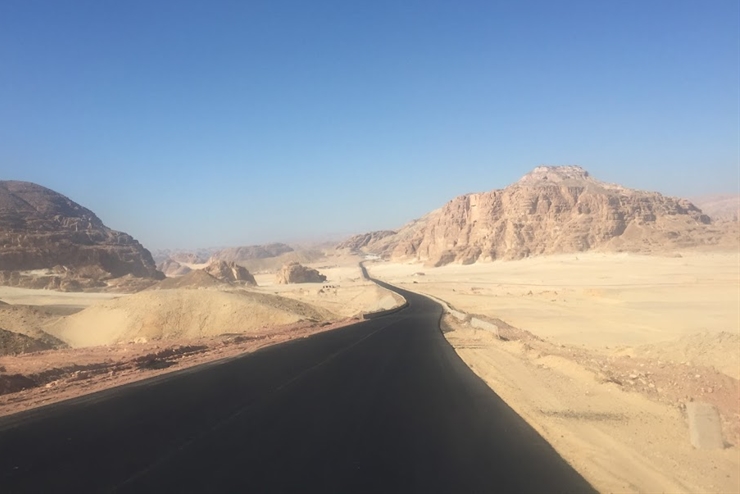My annual Middle Eastern tour this winter is limited to Egypt, mainly due to the less rigid Corona-related restrictions there than elsewhere in the region. An additional motive is the fact that this country of over a hundred million souls faces an unprecedented geopolitical crisis that is not sufficiently known in the outside world yet concerns a genuinely existential issue: the control and management of the country’s lifeline, the river Nile.
“Nile” is derived from the Greek word nelios (“river valley”), but ancient Egyptians called it simply Iteru, meaning “Great River.” Egypt itself is the river’s gift, according to Herodotus. A generous source of sustenance, it played a key role in the rise of Egyptian civilization. It has been the lifeline of civilized humanity since time immemorial, the focus of myth, legend and adventure for hundreds of generations. To ancient Egyptians, its source was in heaven; it flowed both above and below ground. The annual flooding, which provided plentiful harvests in the layers of silt left after the waters receded, was the return of the god Hapi, a symbolic victory of life over death and the reason for supremely fertile land, providing uniquely rich harvests. The Nile needed no temples; it was the biggest and most splendid Egyptian temple all by itself.
Fast forward to the early 21st century. Egypt is a country of over a hundred million people. Like their far less numerous predecessors three or four thousand years ago, they still depend on the Nile. Vitally so. In fact, the river provides 97 percent of the country’s fresh water reserves.
Enter the Grand Ethiopian Renaissance Dam (GERD), a massive gravity dam on the Blue Nile River in Ethiopia. It has been under construction since 2011 and is now almost complete. The dam lies 28 miles east of Eithiopia’s border with Sudan. Its primary purpose is to provide electricity to relieve Ethiopia’s acute energy shortage. With an intended capacity of over six gigawatts, the dam will be the largest hydroelectric power plant in Africa and among the largest in the world. The 510-foot-tall, 5,840-foot-long structure effectively would give Ethiopia control over the headwaters of the Blue Nile, which merges with the far smaller White Nile in the Sudanese capital of Khartoum.
The government of Egypt was dismayed by GERD at first. It was caught off guard, as the Ethiopian move coincided with a turbulent period of regime changes in Cairo (2011-2013). Egypt insists that the project violates international agreements, signed in 1929 and 1959, that give Egypt rights to 55.5 billion cubic meters of Nile water a year and Sudan—which lies between Egypt and Ethiopia—18.5 billion cubic meters. Cairo complains, with considerable justification, that Ethiopia started work on the project in 2011 without consulting Egypt and that it has used the turmoil caused by the “Arab Spring” and the subsequent fall of Hosni Mubarak to present Egypt and the rest of the world with a fait accompli.
The exact impact of the project on the downstream countries is still a matter of bitter dispute, more than a decade after its launching in 2011. Egypt asserts that it would suffer from a temporary yet potentially catastrophic reduction of water availability due to the filling of the reservoir, as well as a permanent decrease due to evaporation from the enormous artificial lake that would emerge behind the dam (724 square miles). The volume of the reservoir is planned to reach 74 cubic kilometers (over 60,000,000 acre-ft), which is approximately 150 percent of the median annual flow of the Blue Nile at the border between Ethiopia and Sudan. In addition, the dam may lead to a permanent lowering of the water level in Lake Nasser, created by the Aswan High Dam, in southern Egypt. This would reduce the site’s hydropower generating capacity by 100 MW for every three-meter drop of the water level.
Ethiopia claims that the increased storage in the new dam could provide a greater buffer to shortages in Sudan and Egypt during years of future drought, provided the three countries can reach a compromise. Yet in October 2019, Ethiopian Prime Minister Abiy Ahmed declared that “no force can stop Ethiopia from building a dam. If there is need to go to war, we could get millions readied.”
Starting in June 2020, there have been repeated failed attempts on the part of the African Union to mediate and broker an agreement between the parties. The last round of talks under the AU auspices was held in Kinshasa in April 2021. It was unsuccessful primarily due to Ethiopia’s refusal to accept the principle of binding agreements on the dam’s operation and to extend the timeframe of five years for completing the filling of the dam.
After the failure of the April talks, Egyptian president Abdel Fattah el-Sisi issued what sounded like a stern warning:“I am telling our brothers in Ethiopia, let’s not reach the point where you touch a drop of Egypt’s water, because all options are open.” Sisi did not elaborate on what those “options” might be, but in June 2013 his predecessor, Mohammed Morsi, called a meeting, which was inadvertently caught on live TV, wherein Egyptian politicians were discussing the feasibility of destroying the dam by force.
The government in Addis Ababa was apparently unimpressed by Sisi’s warning. Just three months later, Ethiopia completed the second filling of the dam (July 19, 2021), again without any prior agreement with the two downstream countries. The dispute between Sudan and Ethiopia also escalated in 2021. After the second filling of the dam, an advisor to the Sudanese de facto head of state, Abdel Fattah al-Burhan, spoke of a water war “that would be more horrible than one could imagine.”
A desert road in Egypt. (Srdja Trifkovic)
